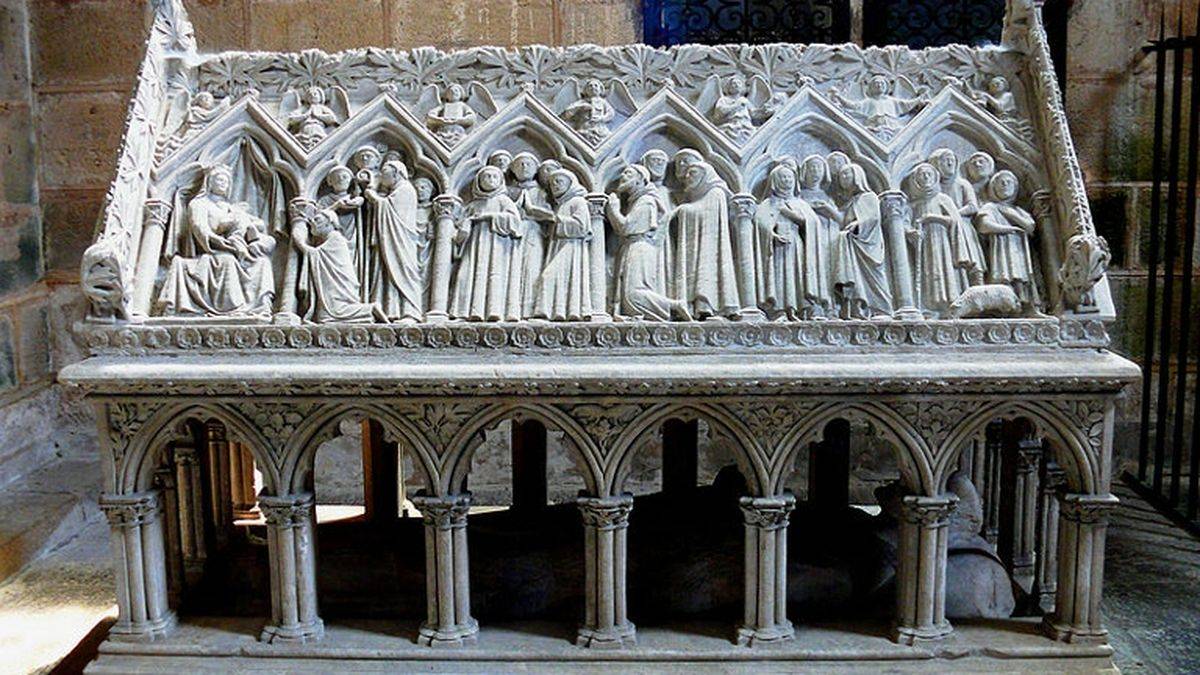 Etienne's grave | ©MOSSOT / CC-BY-SA
Etienne's grave | ©MOSSOT / CC-BY-SAThe foundation
Etienne in his shack
1120. A priest, Etienne de Vielzot, turned up in the middle of Corrèze (Central France).
The place was desolated, but Etienne wasn’t discouraged.
He raised here a small shack where he prayed, in a complete solitude.
But soon, new friends arrived: they wanted to raise a Cistercian abbey here! The future Aubazines…
And quickly the little community grew.
Further, Etienne made miracles! He multiplied breads and healed disabled persons...
Perfect bones!
Etienne died on March 8th 1159 in Bonnaigue abbey, near Aubazines.
They brought back his body, followed by a huge crowd who came for a last miracle…
In 1880, they opened his grave and found intact bones. One more miracle?
They put them in a beautiful reliquary and a gorgeous grave, we still can see in the abbey...
Crap, ladies!
Among friends who came and helped Etienne for the construction of the abbey, we had… women!
No way… the monk raised them their own convent: this was Coiroux abbey, next to Aubazines.
Until the French Revolution, women lived under Aubazine’s domination.
So it gave the French expression Qui a fille à Coiroux a gendre à Aubazine, ″Who has a daughter in Coiroux, has a son-in-law in Aubazines″!
The visit of Aubazines
A canal, Coco Chanel
We can visit the Romanesque church (the biggest one in Limousin), with, inside… Etienne’s grave!
We also visit the religious buildings, like the chapter room, the cloister, the kitchen…
Outside, don’t miss the ″Monks’ canal″: dug 800 years ago by Cistercian monks, it used to capture river Coiroux, in order to irrigate the gardens. Ingenious!
Sold during the Revolution, the abbey became a girl orphanage: do you know the famous Coco Chanel was a boarder?
Today, the abbey belongs to the Greek church.
Saint Etienne’s grave
A real master piece! Made of limestone, it dates back to the 13th century.
The sarcophagus has a house shape. We have a queue of characters led by saint Etienne, walking through the arches, towards the Virgin Mary and baby Jesus, sitting at the bottom.
We see the abbot kneeling, then monks wearing hoods or tunics, then domestics with animals.
Look: the recumbent figure is damaged! Do you know why?
Because the pilgrims used to scratch the stone to make a decoction, supposed to cure all the diseases!
Other treasures
In the church, don’t miss the stalls (18th c.) and the wooden liturgical closet, the oldest furniture in France!
It dates back to the 12th century, made of oak.
